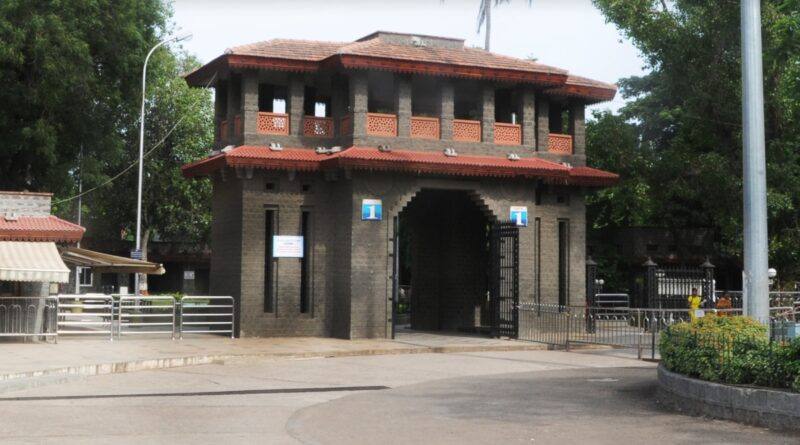SHIRDI, One Of The Most Sought-After Pilgrim Destinations Now
Have You Visited Shirdi?
My hubby and I made a pilgrim trip to Shirdi, Maharashtra, in the 1st week of December 2024.
The weather was very ideal for us to move around in the temple complex, with the temperatures ranging between 28°C and 15 °C.
Our accommodation in Shirdi was very comfortable and came with complimentary to-and-fro transportation to temple/hotel. The driving staff were very courteous and helpful. Our hotel had an understanding with a shop near the temple where we could leave our mob phones and shoes before entering the temple premises.
We had an online booking for the Aarti darshan the day after our arrival. However, the day we landed, we went to the temple area in the evening, for what we thought was a stroll. While we were walking, a stranger asked us if we wanted to have a senior citizens darshan as there was hardly any queue for it. He appeared, asked/ informed and disappeared in a mysterious way. His question set us thinking whether to go or not to go. We decided to go. Right enough, there was hardly anybody in this queue. So we had a peaceful darshan and got out of the temple complex within half an hour.
The Temple complex:
The temple premises of Shri Saibaba is spread in approximately 200 sq. mtrs. It is situated in the heart of Shirdi village and is a major center of pilgrims from all over the world.
On an average, daily 25,000 devotees visit Shirdi to have the Darshan of Shri Saibaba. One can visit he following places of worship within the temple complex:
Gurusthan

Samadhi mandir

Dwarkamai

Chavadi

Lendi garden

Hanuman Temple

Nearby tourist attractions:
One can visit the Ajanta caves which are 30 rockcut Buddhist cave monuments dating from 2nd C BC to about480 CE.
Alongside are the Ellora Caves which are a UNESCO World Heritage Site. It is one of the largest rock-cut Hindu temple cave complexes in the world, with artwork dating from the period 600–1000 AD. Both Ajanta and Ellora are easily accessible from Shirdi.
Triumbekeshwar (abode of one of the twelve Jyotirlingas) and Shani Shingnapur (known for distinctive custom of living in doorless homes and trusting the God Shani for protection from danger and theft) – are both pilgrimage sites that are not far from Shirdi.
Food:
The Shri Sai Prasadalay is a place where free food is provided to devotees. It has a huge dining hall with area of 11,550 sq mt with a seating capacity of 3,500 devotees. It has been termed as the Worldʼs Largest Solar-Powered Free Food Kitchen.
Talking about food, we observed that most of the restaurants around the temple complex wore a deserted look, with hardly any customers in them. Although we couldn’t figure out the reason initially, it was brought to our notice later that most of the devotees had their meals at the free Prasadalay. Being a pilgrim centre, the food sold /offered everywhere is pure vegetarian.
Medical treatment:
Considering the ever increasing number of patients from in and around Shirdi, the Shri Saibaba Sansthan Trust and the management at that time decided to expand and establish a hospital. The main aim was to provide all medical facilities at minimal rates and to provide free medical facilities to patients belonging to Below Poverty Line (BPL). For this reason, a Super Speciality Hospital was established in the name of Shri Saibaba. This Hospital was inaugurated on 15th May 2006.
Shopping:
Paithani sarees seem to be very popular in Shirdi. The artisans weave their art forms from the myths, faiths, symbol and natural surroundings thereby providing an appealing dynamism. Intricate designs on Pallu and border are the specialty of Paithani Sarees and fabrics. It is believed that the motifs woven in the Paithani sarees like peacock, lotus, mango and other designs have been borrowed from the rock-cut caves of Ajanta and Ellora. The weavers use silk yarn and zari with various specifications to produce their products.
It was here that we came across sarees made out of sugarcane fibre which is extracted from the sugarcane plant and then processed into a yarn that is used to weave the saree. Sugarcane sarees are known for their softness, durability, and eco-friendly nature. They are also often lightweight and breathable, making them comfortable to wear in warm weather.
This is something indigenous to Shirdi, a souvenir which one must take home.
Flights from Chennai:
There are direct flights operating between Chennai and Shirdi, so that was very convenient for us.
While at Shirdi airport, one can buy the tea masala that is sold there. It is an excellent and healthy mix of certain spices, easy to use, full of flavour and tasty to consume. All one needs to do is to mix a spoon of this masala in one’s cup of tea or milk. This was recommended to me by a very dear friend of mine and I am so thankful to her. The famous Maharashtrian kanda poha alongwith this masala tea make a great combo, anytime.
Do try it out, people. Pray, eat well and be happy.





